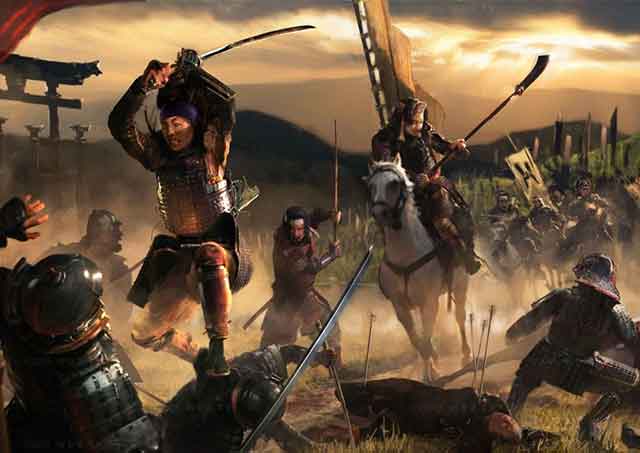
The series of conflicts in 1584 known as the Battle of Komaki and Nagakute unfolded between the armies of Hashiba Hideyoshi (who later assumed the name Toyotomi Hideyoshi in 1586) and those of Oda Nobukatsu and Tokugawa Ieyasu. Prior to this, both Hideyoshi and Ieyasu had served under Oda Nobunaga without encountering any clashes, making this their sole period of hostility. While the history predominantly recalls the two major battles, the event is sometimes referred to as the Komaki Campaign.
Context:
In 1583, during the Battle of Shizugatake, Hideyoshi lent his support to Nobukatsu, Oda Nobunaga's second son, and defeated Shibata Katsuie, a supporter of Nobunaga's third son, Nobutaka. Following this victory, Hideyoshi invited Nobukatsu and other generals to his newly completed Osaka Castle to assert his dominance and reverse the power dynamic. Nobukatsu, however, refused to attend, severing ties with Hideyoshi. Hideyoshi attempted to reconcile with three of Nobukatsu's main retainers, which fueled suspicions and ultimately led to their execution. This gave Hideyoshi a pretext to attack Nobukatsu, prompting Nobukatsu to seek help from Tokugawa Ieyasu. As Ieyasu dispatched his forces, the conflict shifted into a confrontation between Hideyoshi and Ieyasu.
Battle Events:
The initial battle took place near Mount Komaki, leading to its designation as the "Battle of Komaki." Subsequent engagements unfolded in the vicinity of Nagakute, resulting in the name "Battle of Nagakute" for the overall conflict.
Battle of Haguro:
In Tensho 12, on the 13th day of the third month (April 23, 1584), Ieyasu reached Kiyosu Castle. On the same day, warriors aligned with the Oda clan, led by Ikeda Tsuneoki, defected to Hideyoshi's side, capturing Inuyama Castle originally built by Oda Nobunaga. Learning of this, Ieyasu hurried to Inuyama Castle, arriving two days later. Concurrently, Mori Nagayoshi sought Kiyosu Castle, launching an assault but suffering significant losses. Ieyasu then took control of Inuyama Castle on the 18th day of the third month (April 28).
Mission to Mikawa:
Hideyoshi departed Osaka Castle on the 21st day (May 1), arriving at Inuyama Castle on the 27th day (May 7), and Gakuden (now Inuyama) on the 5th day of the fourth month (May 14, 1584). During this time, Ieyasu mostly avoided direct confrontation, leading Hideyoshi to lower his guard, especially due to Tsuneoki's assertion that Ieyasu was vulnerable in Komakiyama. Hideyoshi, driven by ambition, decided to march towards Mikawa, with support from Mori Nagayoshi, Ikeda Tsuneoki, Hori Hidemasa, and young Hidetsugu. However, their forces suffered a significant defeat in various battles.
Battle of Iwasaki Castle:
Part of the larger Battle of Komaki and Nagakute, the Battle of Iwasaki involved Ikeda Tsuneoki's forces attacking the garrison at Iwasaki Castle, led by Niwa Ujitsugu. Tsuneoki's aggressive assault led to the capture of the castle.
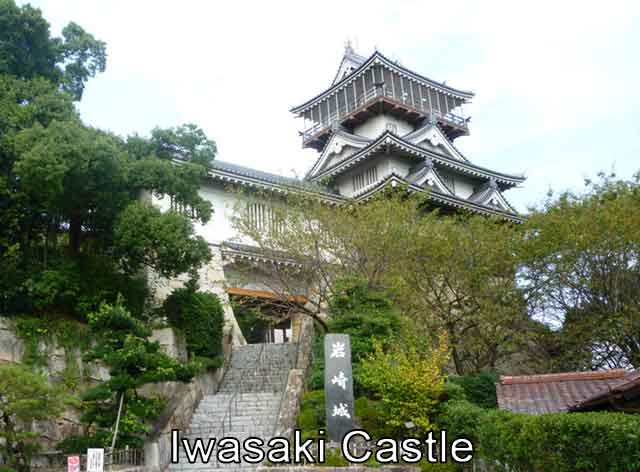
Battle of Hakusanmori:
As Hideyoshi's commanders sought refuge at Hakusanmori, Tokugawa forces closed in. Ōsuga Yasutaka and Sakakibara Yasumasa launched a surprise attack on Hideyoshi's forces, leading to their significant defeat.
Battle of Hinokigane:
Following the Battle of Hakusanmori, Tokugawa forces fortified Mount Komaki, resulting in a standoff. Toyotomi Hideyoshi's commander, Ikeda Tsuneoki, attempted raids in Mikawa Province, leading to clashes with Tokugawa troops. Despite initial resistance, Hori Hidemasa was forced to withdraw.
Battle of Nagakute:
Mori Nagayoshi planned to flank Tokugawa forces during a support operation for Ii Naomasa, but Tokugawa charged directly, avoiding the intended flanking. This demoralized Hideyoshi's forces, and Tokugawa gained the upper hand.
Aftermath:
Hideyoshi's forces pursued Ieyasu but couldn't catch him. Eventually, Hideyoshi and Ieyasu reached a peace agreement in early 1585. Despite the advantages Ieyasu gained in these engagements, both leaders recognized the folly of continuing their quarrel and opted for reconciliation.
See also
-
The Siege of Hara Castle

The Shimabara Rebellion of 1637–1638, which culminated in the siege of Hara Castle, was the last major uprising of the Edo period and had serious political consequences.
-
Battle of Tennoji

The confrontation between Tokugawa Ieyasu and Toyotomi Hideyori during the “Osaka Winter Campaign” ended with the signing of a peace treaty. On January 22, 1615, the day after the treaty was signed, Ieyasu pretended to disband his army. In reality, this meant that the Shimazu forces withdrew to the nearest port. On the same day, almost the entire Tokugawa army began filling in the outer moat.
-
Siege of Shuri Castle

The Ryukyu Kingdom was established in 1429 on Okinawa, the largest island of the Ryukyu (Nansei) archipelago, as a result of the military unification of three rival kingdoms. In the following years, the state's control spread to all the islands of the archipelago.
-
The Siege of Fushimi Castle
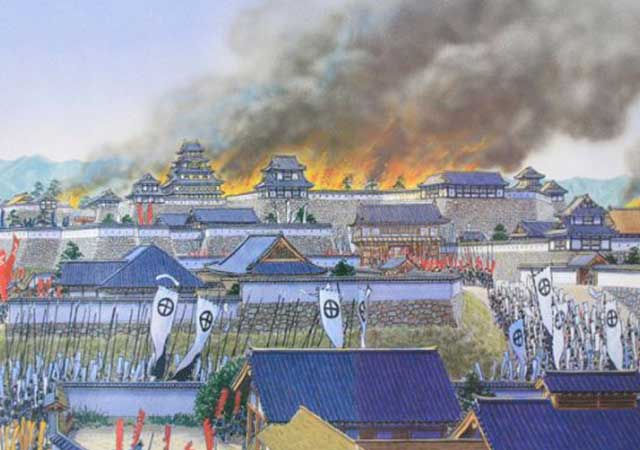
Fushimi can perhaps be considered one of the most “unfortunate” castles of the Sengoku Jidai period. The original castle was built by Toyotomi Hideyoshi in the southeast of Kyoto in 1594 as his residence in the imperial city.
-
The Siege of Otsu Castle
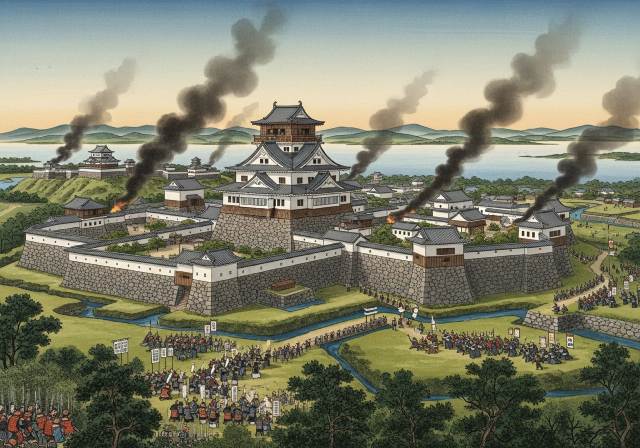
The siege of Otsu Castle was part of the Sekigahara campaign, during which the so-called Eastern Coalition, led by Tokugawa Ieyasu, fought against the Western Coalition, led by Ishida Mitsunari. Otsu Castle was built in 1586 by order of Toyotomi Hideyoshi near the capital Kyoto, on the site of the dismantled Sakamoto Castle. It belonged to the type of “water castles” — mizujō — as one side of it faced Japan's largest lake, Lake Biwa, and it was surrounded by a system of moats filled with lake water, which made the fortress resemble an island.
-
The Siege of Shiroishi Castle
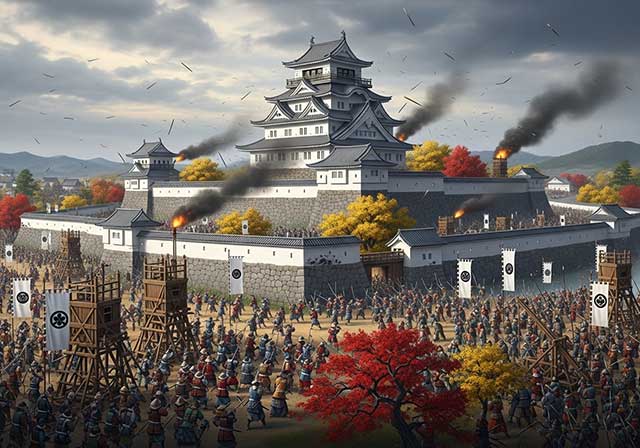
The siege of Shiroishi Castle was part of the Sekigahara campaign and took place several months before the decisive battle of Sekigahara. The daimyo of Aizu Province, Uesugi Kagekatsu, posed a serious threat to Tokugawa Ieyasu's plans to defeat the Western Coalition, and Ieyasu decided to curb his actions with the help of his northern vassals. To this end, he ordered Date Masamune to invade the province of Aizu and capture Shiroishi Castle.
-
The Second Siege of Jinju Castle
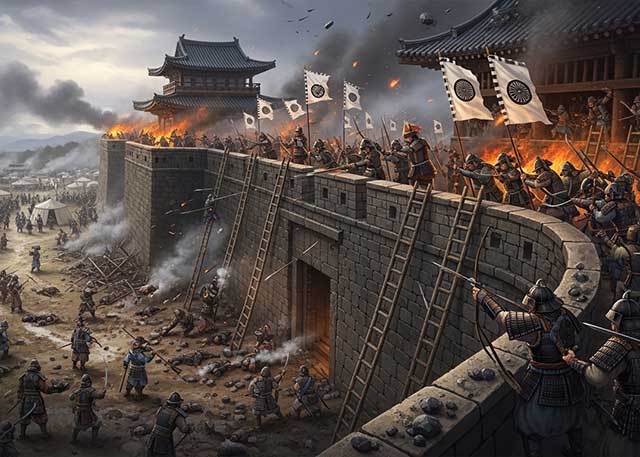
During the two Korean campaigns of the 16th century, the Japanese repeatedly had to capture enemy fortresses and defend occupied or constructed fortifications from the combined Korean and Chinese forces. Among all the operations of that time, the second siege of Jinju Castle is considered the most interesting from the point of view of siege warfare.
-
The Siege of Takamatsu Castle
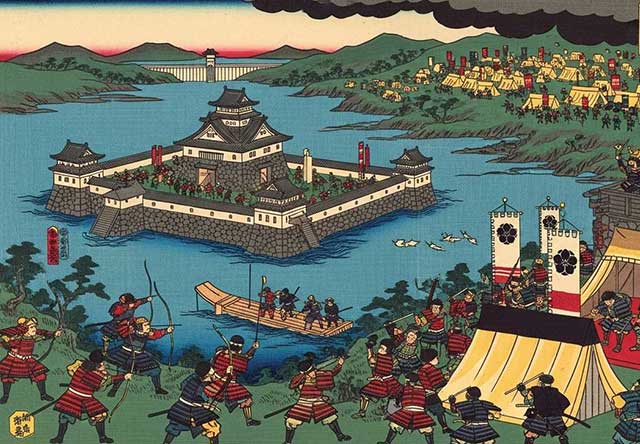
The siege of Takamatsu Castle in Bitchu Province is considered the first mizuzeme, or “water siege,” in Japanese history. Until then, such an original tactic had never been used.

